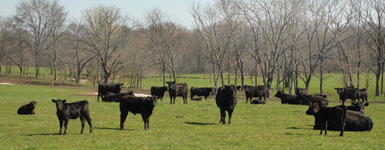Customize Your Herd Health Calendar


Most of us understand the fundamentals of a sport like football, but it's quite a leap to develop the strategy and playbook required to build a winning team. It takes knowledge of individual skills and an understanding of how the team works best together. You have to research your competition and develop a customized game plan to be victorious.
The same is true of your herd health program. There are a number of unique circumstances to each operation and herd of cattle. A one-size-fits-all approach to production practices doesn't optimize your investment.
There are general production calendars available that give basic information on practices that need to be done at various stages of the year. But every producer has different crop and forage production times, breeding seasons, marketing programs and disease challenges. Therefore, your herd health calendar needs to be a unique, customized tool in your cattle operation.
"It's important to look at each operation—the management resources, the breeding season, the forage resources—and then tailor the calendar for the unique set of circumstances that exist at that farm or ranch," says Glenn Rogers, Pfizer Animal Health veterinarian.
One man's plan. Texas farmer Carroll Collier runs a cow–calf operation and sells calves as yearlings weighing about 800 lb. He's a firm believer in working with the veterinarian to develop a protocol that works. He's been preconditioning his calves for a number of years and has teamed up with his veterinarian, Arn Anderson of Bowie, Texas, to establish the right program.
"This past fall is a prime example of the results from a good animal health calendar. We preconditioned all the calves at weaning, and then gave boosters 21 days later. Not one time did we have to treat a calf," Collier says. "A sick calf takes time and resources to treat and get it back to gaining again."
The consultation to develop the calendar is very fair in terms of cost. He pays for the consultation time, but gives his own vaccinations and boosters. Each year offers different challenges, and his veterinarian keeps him apprised of new diseases reported in his area.
Collier says that he participates in the Texas Beef Quality Assurance certification program, which he feels is beneficial for optimizing animal health investment as well as end product quality control.
"The key is to get a veterinarian who will work with you," he says. "I think most of the time they do want to do that and it's worth the investment in the consultation."
"A customized calendar outlines specific vaccines needed and specific timings of products administered," Rogers says. "Even the best products available aren't going to provide their maximum benefit if given at the wrong time."
For some, animal health and management practices are based on tradition, not necessarily on what's best for the animal's immunity. Your veterinarian is your most reliable source for understanding the best time to vaccinate and boost immunity.
New Mexico State University Extension veterinarian John Wenzel explains that the most common reason vaccinated animals get sick is that they fail to fully respond to vaccination. To maximize immune response, follow label directions for timing, route of administration and proper vaccine handling.
"A sound vaccination program developed with your veterinarian and carried out using proper timing and technique is critically important to maintaining the health and profitability of your herd," Wenzel says.
Write it down. It's important to not just get verbal recommendations from your veterinarian, but to get them in a written form that can be kept throughout the year.
"This needs to be a document updated annually," Rogers says. "New products, changes in the operation or a situation where performance hasn't been as expected require a change or tweak in the program."
Information to provide. Collier puts his herds' medical records on the computer using a software program so he can provide preconditioning certificates on the animals. That also provides documentation when working with his veterinarian in refining the health program.
The more information you can provide on production measurements such as calving percentage, weaning weights, morbidity and mortality data, the better overall herd health picture you are giving your veterinarian. This allows your veterinarian to look for any potential hidden problems that might easily be corrected or require further investigation.
Sometimes the problem is not related to vaccination or other animal health product failures, but rather to inadequate nutrition at certain stages of production or facility management. Your veterinarian can help you identify symptoms of nutrient deficiencies and facility challenges, as well as advise you on how to avoid problems and costs in the future.
"If you don't have a veterinarian that you work with regularly, find one who is willing to work with you," Rogers says.
You can use a basic standardized production calendar, available from many land grant university Web sites, as a starting point for talking with your veterinarian and develop it into a customized calendar in terms of timing and what is or isn't necessary for your operation.
DETAILS TO TELL YOUR VET
To contact Kim Watson-Potts, e-mail kwatson@farmjournal.com.







